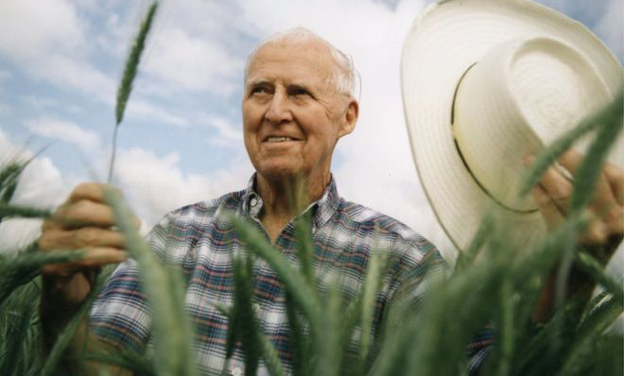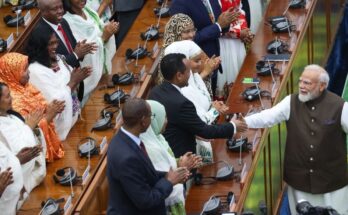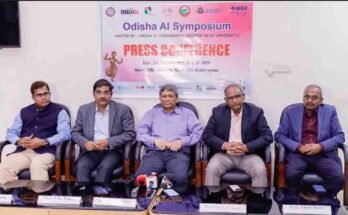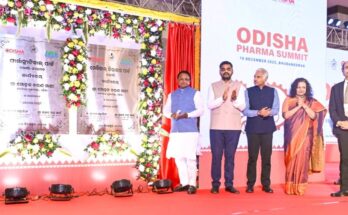In the early 1900s, newlyweds Cathy and Cappy Jones left Connecticut in the US to start a new life as farmers in north-west Mexico’s Yaqui Valley, a little-known dry and dusty place, a few hundred kilometres south of the Arizona border.
When Cappy died in 1931, Cathy decided to stay on. By then she had a new neighbour: the Yaqui Valley Experiment Station, a grand agricultural research centre with impressive stone pillars, and cleverly designed irrigation canals.
For a while, the centre raised cattle, sheep and pigs, and grew oranges, figs and grapefruit. But by 1945, the fields were overgrown, the fences fallen and the windows shattered. The station was infested with rats.
So when Cathy heard strange rumours about a young American man setting up camp in this dilapidated place – despite the lack of electricity, sanitation, or running water – she drove over to investigate, said a BBC News report.
There she found the Rockefeller Foundation’s Norman E Borlaug, who was trying to breed wheat which could resist stem rust, a disease that ruined many crops.
Further south, where he was supposed to be based, you had to sow in spring and harvest in autumn. Here, he planned to exploit a different climate which would also let him sow in autumn and harvest in spring, and perhaps favour different varieties of wheat.
However, the Foundation didn’t have permission to work in the region, so he couldn’t be there officially. That meant no machinery, and no help to make the place habitable. But he left his wife Margaret and their daughter Jeanie behind in Mexico City, and went anyway.
“It often appeared to me that I had made a dreadful mistake in accepting the position in Mexico,” he confessed in the epilogue to his book, Norman Borlaug on World Hunger.
But he was determined to tackle the scourge of hunger, something he had seen at first hand. “I am a product of the worst of the depression,” he told the Dallas Observer in 2002.
Cathy took pity on the young man, teaching him Spanish, inviting him round for weekly meals, and letting him wash himself and his clothes. He later said he wouldn’t have survived without her help.
50 Things That Made the Modern Economy highlights the inventions, ideas and innovations that helped create the economic world. It is broadcast on the BBC World Service. You can find more information about the programme’s sources and listen to all the episodes online or subscribe to the programme podcast.
She also drove him to the nearest town, Ciudad Obregón, where – 23 years later – the main street would be renamed in his honour: Calle de Dr Norman E Borlaug.
That same year, 1968, Stanford biologist Paul Ehrlich published an explosive book.
In The Population Bomb, Ehrlich noted that in poor countries such as India and Pakistan, populations were growing more quickly than food supplies.
In the 1970s, he predicted: “Hundreds of millions of people are going to starve to death”. Thankfully, Ehrlich was wrong, because he didn’t know what Norman Borlaug had been doing.
Borlaug would later be awarded the Nobel Peace Prize for the years he had spent shuttling between Mexico City and the Yaqui Valley, growing thousands upon thousands of kinds of wheat, and carefully noting their traits: this kind resisted one type of stem rust, but not another; this kind produced good yields, but made bad bread; and so on.
He couldn’t sequence the wheat’s DNA to figure out which genes caused which traits, because that technology was decades away. But he could cross the varieties which had some good traits, and hope that one of the cross-breeds would happen to have all the good traits and none of the bad.
It was painstaking work, but eventually it paid off.
Borlaug produced new kinds of “dwarf” wheat that resisted rust, yielded well, and – crucially – had short stems, so they didn’t topple over in the wind. Through further tests, he worked out how to maximise their yield – how far apart to plant them, how deep, with how much fertiliser, and how much water they needed.
By the 1960s, Borlaug was travelling the world to spread the news. It wasn’t easy.
In Pakistan, the director of a research institute reported that they’d tried his wheat, but yields were poor. Borlaug soon saw why. Ignoring his instructions, they’d planted too deep, too far apart, and without fertilising or weeding. The man replied, perplexed: “This is the way you plant wheat in Pakistan.”
Many couldn’t conceive that a revolution was possible.
For half a century, Pakistan’s wheat yields had been consistent: never above 800lbs (360kg) an acre. Mexican farmers were now getting more than three times that.
So was Mexico’s way worth a shot? No, said an eminent academic. “These figures prove that Pakistan’s wheat production will never rise!”
Borlaug could be blunt with people who didn’t get it, no matter who they were. In India, he got into a yelling match with the deputy prime minister. Eventually his haranguing worked. Developing countries started to import Borlaug’s seeds and methods. And from 1960 to 2000, their wheat yields trebled.
Similar work followed on corn and rice. It was dubbed the “green revolution”. Ehrlich had predicted mass starvation but the world’s population more than doubled, and food production kept up.
And yet worries about overpopulation never entirely go away. It’s one of the oldest questions in economics, dating back to the world’s first professor of “political economy”, Thomas Robert Malthus.
In 1798, Malthus published An Essay on the Principle of Population, which made a simple argument: populations increase exponentially – two, four, eight, sixteen, thirty-two. Food production doesn’t.
Sooner or later, he argued, there are bound to be more people than food, with unpleasant consequences. Happily for us, it turned out that Malthus had underestimated the fact that, as people get richer, they tend to want fewer children, so populations grow more slowly.
In fact, 1968 – the year that Paul Ehrlich made his dire predictions – was also the year in which global population growth began to slow. Annual growth has fallen from its 1968 peak of 2.09% to 1.09% in 2018.
Malthus and Ehrlich also both underestimated what Norman Borlaug represents: human ingenuity. More things that made the modern economy: How the plough changed everything, how fertiliser helped feed the world, and how refrigeration revolutionised global trade.
But while population growth has slowed, the UN still predicts we’ll add another few billion people before the century’s end. Some experts worry that food yields are no longer increasing quickly enough to keep pace.
Progress has slowed, and problems are mounting: climate change, water shortages, pollution from fertilisers and pesticides.
These are problems the green revolution itself has made worse. Some say it even perpetuated the poverty that keeps the population growing: fertilisers and irrigation cost money which many peasant farmers can’t get. Paul Ehrlich, now in his 80s, maintains that he wasn’t so much wrong, as ahead of his time. Perhaps if Malthus were still alive, in his 250s, he’d say the same.
But could more human ingenuity be the answer?
Since genetic modification became possible, it’s mostly been about resistance to diseases, insects and herbicides. While that does increase yields, it hasn’t been the direct aim.
That’s starting to change. And agronomists are only just beginning to explore the gene editing tool CRISPR, which can do what Norman Borlaug did much more quickly.
As for Borlaug, he saw that his work had caused problems that weren’t handled well, but asked a simple question – would you rather have imperfect ways to grow more food, or let people starve?
It’s a question we may have to keep asking in the decades to come.
The author writes the Financial Times’s Undercover Economist column. 50 Things That Made the Modern Economy is broadcast on the BBC World Service. You can find more information about the programme’s sources and listen to all the episodes online or subscribe to the programme podcast. (UNI)




